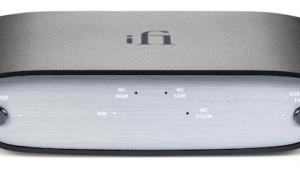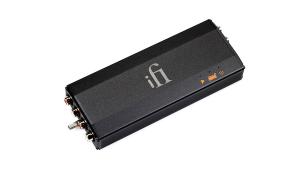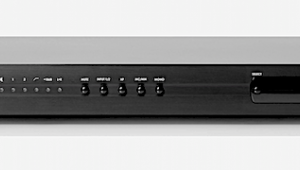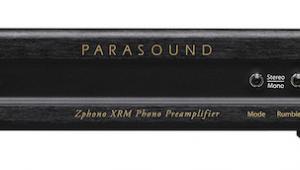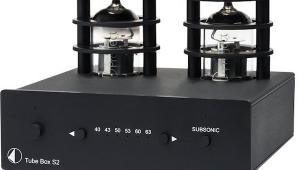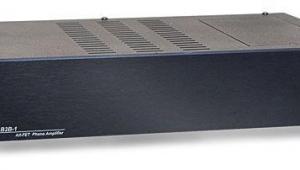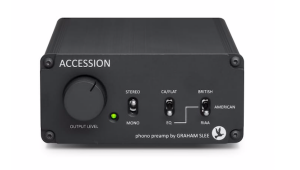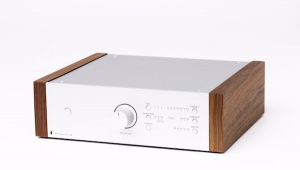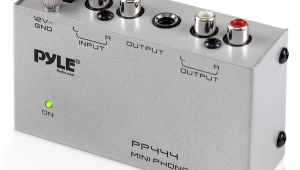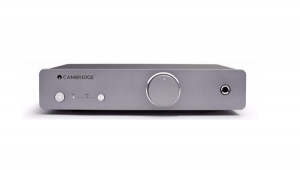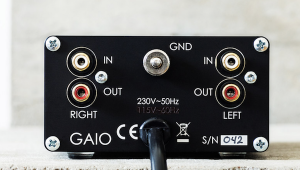Pass Aleph Ono phono preamplifier
That's what I was thinking while auditioning the Pass Aleph Ono phono preamplifier: a very reasonably priced, well-built, utterly flexible product that does all the important things essentially correctly. Then I remembered an article someone had forwarded me, "The Dynamic Range Potential of the Phonograph," by electrical engineer Ron Bauman, published in Audio Electronics in April 1996 (footnote 1). In the "About the Author" box it says that Bauman wastes his spare time restoring old Volvos instead of Saabs, but I'll forgive him that lapse in taste because his article is so enlightening.
Bauman explains that low-level ambient details "...are represented by stylus motions of less than an ultraviolet wavelength (1/100,000,000 of a meter)—a dimension approaching the size of a complex organic molecule." He goes on to say that such tiny motions are usually occurring simultaneously with orchestral crescendos thousands of times larger. That both ends of the dynamic scale get their due—that it works as well as it does—is amazing, isn't it?
Bauman reiterates the well-known and -understood 96dB dynamic range of the 16-bit CD system, and the conventional methodology used to define the LP's dynamic range—a signal/noise ratio measured at an arbitrary cartridge output level relative to preamplifier noise and usually defined with the input shorted. This dynamic range more often than not falls between 60 and 70dB. That 26dB difference is a gaping Grand Canyon that should render vinyl compressed and lifeless by comparison.
Like all genuine researchers, as opposed to the charlatans passing for scientists among the "measurements are God" crowd, Bauman moves from careful observation to an attempt to understand why the numbers don't add up to what's heard. He postulates that the methodology used to determine the LP's dynamic range is flawed. Bauman changes the playing field, defining dynamic range as "the ratio of the loudest sound to the background noise referenced to the preamp output terminals," because he believes there is "...an intimate relationship between the cartridge and the first preamplifier stage," with the interaction between the two determining the actual dynamic range of analog playback.
Painstakingly, and with enough charts and formulae to render the mathlexic unconscious, Bauman builds his case using three modestly priced cartridges (a Sumiko Blue Point, a Grado MCZ, and an Ortofon MC 100), concluding that the optimized combination of low-noise amplifying device and cartridge yields an actual dynamic range that is "...equal to, or better than the theoretical best a CD can achieve." In fact, the best combination Bauman measured bettered CD's dynamic range by 16dB. Bauman also states what others have before: that while analog noise (thermal or tape hiss) is added linearly to the signal, our ears constitute a sophisticated filter that can retrieve a great deal of information below the noise—perhaps up to 30dB below. This means we can add up to that much beyond what the measured dynamic range of analog might be. Digital quantizing noise, on the other hand, obliterates information.
I am not an electrical engineer, and am hardly capable of commenting on the veracity of Bauman's analysis. I only know what I hear, and what I hear correlates well with what he's measured—and that's always nice. And if you believe the conventional wisdom that vinyl's dynamic range is limited to 60–70dB, and if you wish to continue believing that, do yourself a favor and don't bother listening to the Pass Aleph Ono.
Nelson Passed
While the Pass name is on the product, it was designed not by Nelson Pass, but by Wayne Colburn, who, according to the manual (the most informative I've yet encountered), "supervises its construction, and personally tests and listens to each preamplifier."
The circuitry is housed in a simple but sleek-looking black box, milled and engraved in-house from thick, black-satin-finished machined aluminum. The front panel sports a blue LED, and that's all: the unit is designed to be plugged in and left on. The rear panel is fitted with a ground post and four single-ended inputs: one pair each for MC and MM cartridges. There are two sets of outputs, single-ended and balanced, and a standard IEC jack so you can choose your AC poison.
All gain, MM capacitance, and MM loading adjustments are made internally. Once you've unscrewed four large hex-head bolts and removed the hefty top cover (pull the AC plug first!), you'll find an ultra-clean layout and high build quality, with power-supply circuitry (minus the transformer, of course) and gain sections sharing a common board. Were price not a consideration, perhaps Colburn would have opted for an outboard supply and a thicker, "high-speed" circuit board.
Two DIP switches provide the gain and loading options and your choice of MM or MC setting. In addition, openings on the main board allow you to solder in your own choices for MC resistive and MM capacitive loading. The MC loading resistors are set in "roughly binary steps" (1000, 825, 475, 249, 100, 47, 22, and 10 ohms); flipping more than one puts them in parallel. With all "on," loading is approximately 5 ohms, but, being mathlexic, I don't know what 1000+825 gives you—though I know it's not 1825 ohms! [It's 452 ohms.—Ed.] I used the switches singly, which offered enough choices, though 256 possibilities are available if you can do the math.
There are three capacitance choices for MM mode: 100, 220, and 330pF. When setting this to comply with the manufacturer's recommended capacitive load, be sure to add the capacitance of the phono cable, if that number is available. While there are both MM and MC input jacks on the unit, only one set is available at a time; you must choose either MM or MC mode on the DIP-switch panel.
The board also has two sets of jumper posts. The unit is shipped set for MC with a 100 ohm load, and a maximum gain of 69dB single-ended and 75dB using the balanced outputs. If that's too much for your line section to deal with, you can add jumpers to reduce the gain by 4 or 10dB, or you can install both sets and drop it by 14dB.
Circuits
As explained in the ultra-informative instruction manual, the Aleph Ono is a three-stage design. An ultra-low-noise, noninverting pre-preamplifier comes first, boosting the MC signal 25 or 30dB without any EQ. That signal then drives the main gain stage, which is used for the MM boost and the RIAA EQ. The third stage is an inverting unity-gain circuit for the balanced output.
As in many, many phono preamplifiers, both tubed and solid-state, the Ono's MC boost is provided by JFETs—here (according to the manual), four matched ultra-low-noise devices operating in parallel and providing an input random-noise floor of less than 500 picovolts (–186dBV!). The cascoded output drives another JFET, which offers the selectable 25 or 30dB of additional, unequalized gain. No loop negative feedback is used in the single-ended circuit. The main gain stage uses JFETs on the input and MOSFETs elsewhere.
The claimed noise-floor specs are among the best, if not the best, I can remember seeing. RIAA equalization is applied both actively and passively at different parts of the curve and is claimed to be within ±0.1dB from 20Hz to 20kHz, regardless of gain or loading. Maximum harmonic distortion is less than 0.05% (1kHz) at 20V RMS or less.





